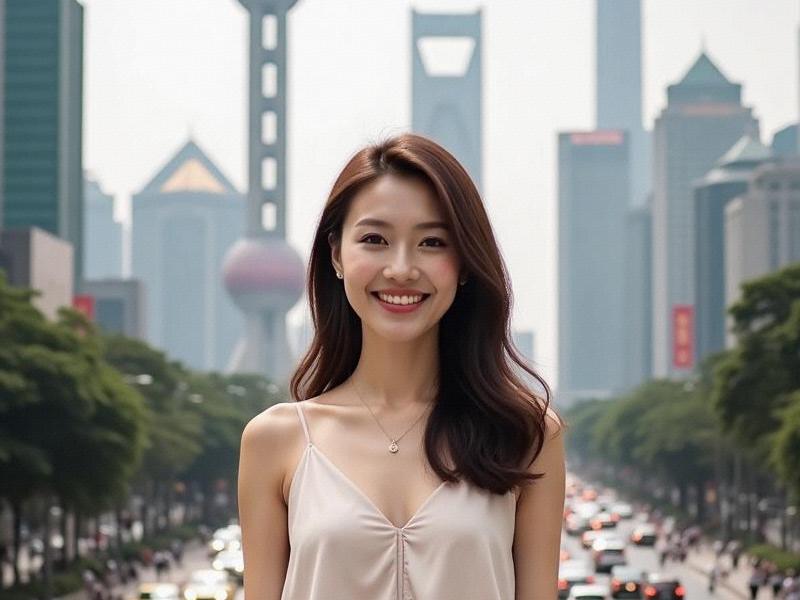Shanghai's Dual Renaissance: How Art and Algorithms Are Reshaping China's Global City
⏱ 2025-06-21 00:21 🔖 上海龙凤娱乐联盟
📢0℃

Section 1: The Silicon Bund Phenomenon
• Tech Meets Tradition:
- 47 hybrid cultural-tech spaces opened since 2023
- Historic buildings repurposed as innovation labs
- Digital art galleries attracting 2.3M visitors annually
• The New Creative Class:
- 38% increase in "techno-artisan" startups
- Traditional craftsmen collaborating with AI engineers
- Government-backed incubators fostering cross-disciplinary projects
上海私人外卖工作室联系方式 Section 2: Museums of the Future
Shanghai's cultural institutions lead digital transformation:
- Blockchain-authenticated digital artifacts
- VR reconstructions of lost architectural wonders
- AI-curated exhibitions adapting to visitor interests
- Holographic performances of traditional opera
Section 3: The Innovation Corridors
Geographic shifts in creative industries:
419上海龙凤网 - West Bund becoming Asia's largest AR/VR production hub
- Jing'an transforming into "Silicon Alley" for creative tech
- Former industrial zones reborn as maker villages
- Underground music scenes influencing tech design
Section 4: The Global Competition
How Shanghai compares with:
- Tokyo's robotics-integrated culture
- Seoul's K-pop tech synergy
- Singapore's smart heritage initiatives
上海龙凤419 - London's fintech-creative fusion
Section 5: Challenges Ahead
Balancing progress with preservation:
- Digital divide in arts accessibility
- Commercialization vs. artistic integrity
- Talent retention in competitive market
- Sustainable growth of creative ecosystems
Conclusion: The Shanghai Model
Shanghai's unique approach—honoring its multicultural past while aggressively embracing technological futures—offers a blueprint for 21st-century urban centers seeking to maintain cultural soul amid rapid digital transformation.
Shanghai's New Femininity: How Urban Women Are Reshaping China's Social LandscapeNeon Renaissance: How Shanghai's Elite Clubs Are Redefining China's Nightlife EconomyThe Shanghai Modern: How Women Are Redefining China's Global City"Neon Algorithms: How Shanghai's Nightlife Districts Are Reinventing Luxury Entertainment"The Velvet Rope Revolution: Inside Shanghai's Next-Gen Entertainment PalacesThe Shanghai Paradox: Where Quantum Computing Meets Qing Dynasty TeahousesShanghai's Nightlife Renaissance: How Luxury Clubs Are Redefining Urban EntertainmentShanghai Beauties: A Glimpse into the Elegance and Diversity of Shanghai's WomenShanghai 2025: Where Futuristic Ambition Meets Timeless HeritageShanghai 2045: The Making of a Neo-Futurist Megacity
The New Golden Age: Shanghai's Entertainment Clubs Redefining Urban NightlifeNeon Renaissance: How Shanghai's Entertainment Clubs Are Reinventing Urban NightlifeShanghai's Feminine Revolution: How Urban Women Are Redefining Chinese Beauty StandardsThe Yangtze Delta Megaregion: Shanghai's Symbiotic Relationship with Neighboring CitiesShanghai Glamour: The Evolution of Beauty Standards in China's Cosmopolitan CapitalShanghai After Dark: How the City's Entertainment Clubs Became Global TrendsettersRedefining Shanghai Femininity: How Modern Shanghainese Women Are Shaping China's FutureMetropolitan Symbiosis: How Shanghai and Its Neighbors Are Redefining Regional DevelopmentShanghai's Modern Women: Redefining Beauty, Power and Influence in 21st Century ChinaShanghai's Dual Renaissance: How China's Global City Reinvents Itself Without Forgetting Its Past

